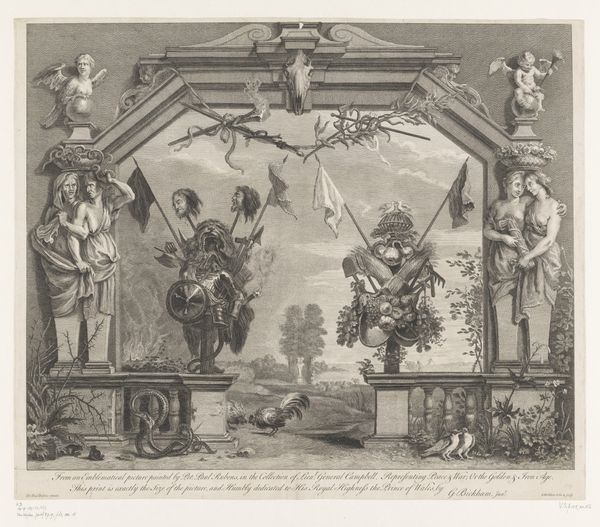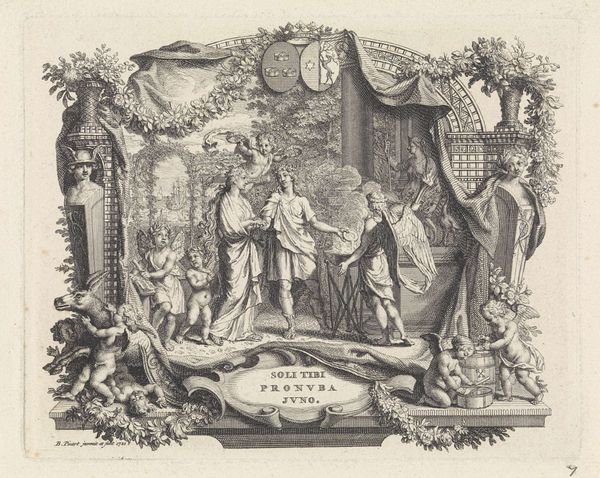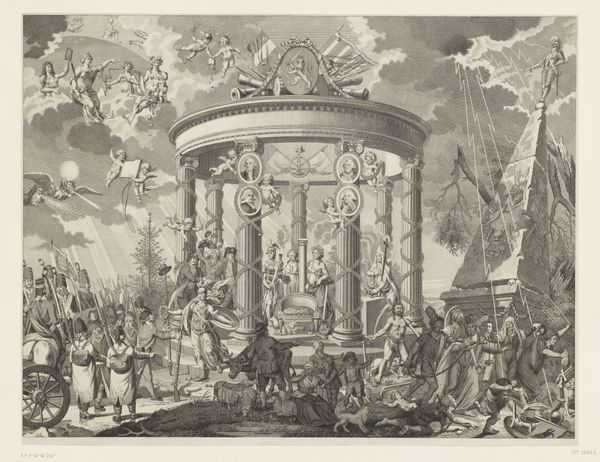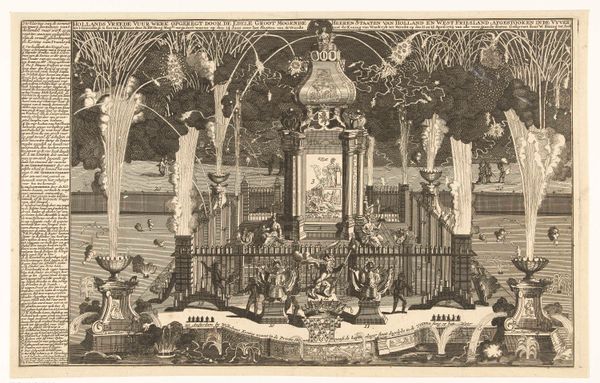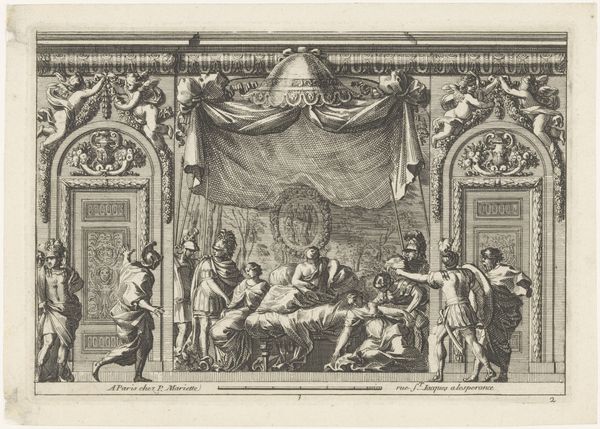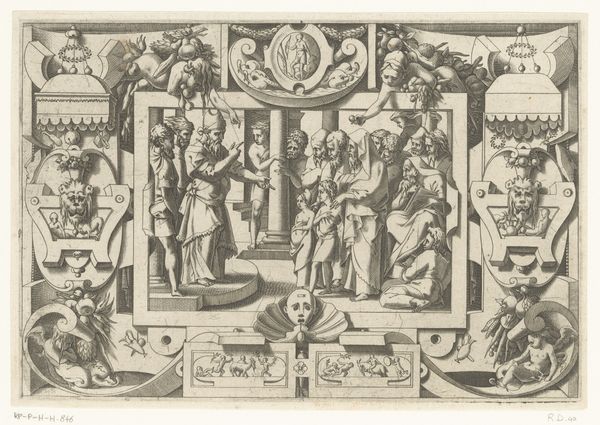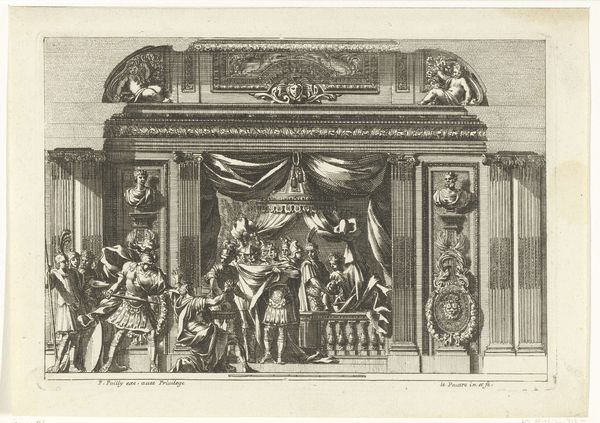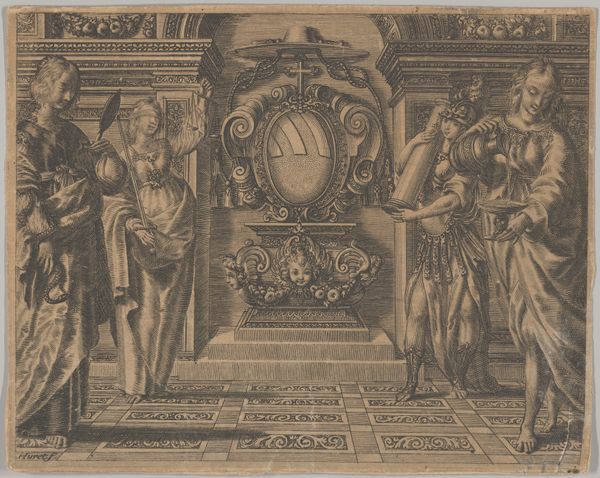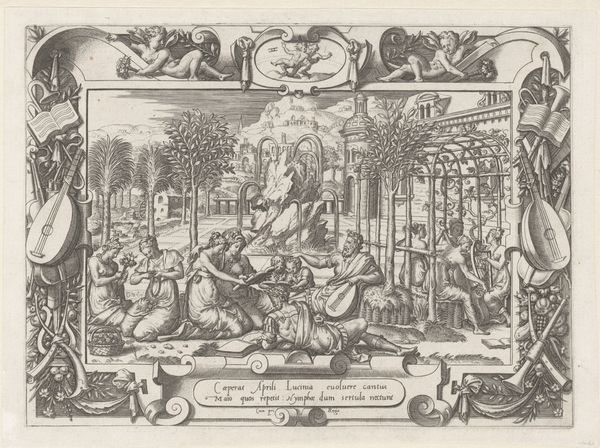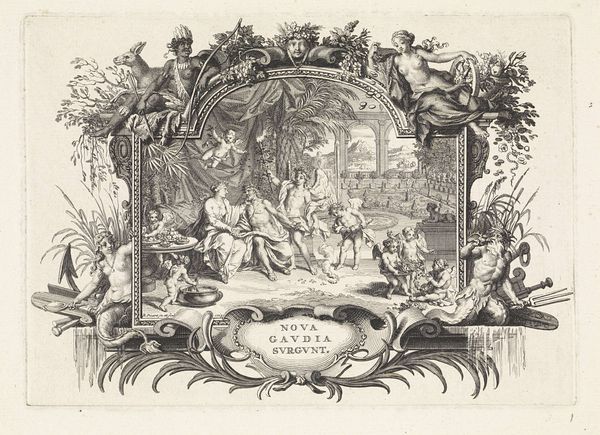
Allegorische voorstelling ter ere van de Jezuïeten zendelingen Possibly 1608 - 1688
0:00
0:00
engraving
#
allegory
#
baroque
#
old engraving style
#
figuration
#
line
#
history-painting
#
engraving
Dimensions: height 291 mm, width 348 mm
Copyright: Rijks Museum: Open Domain
Curator: This engraving, held here at the Rijksmuseum, is titled "Allegorical Representation in Honor of the Jesuit Missionaries." Its creation is attributed to Claude Mellan, dating possibly from 1608 to 1688. Editor: It has such a powerful hierarchical structure. All lines ultimately seem to point upwards, toward the apex. I immediately see it as a study in reverence and aspiration. Curator: Indeed. Consider the historical context. The Jesuit order was instrumental in the Counter-Reformation. This piece would have circulated to bolster the image of the Jesuits and reinforce Catholic dogma amid religious and political upheaval. It serves as an artifact of institution building. Editor: Observe how Mellan utilizes line as form here; his Baroque sensibility structures meaning as content. From the detailed renderings of figures representing continents, to the angels holding laurel wreaths, each element reinforces the overall theme of global evangelization, doesn't it? The lines become rhetoric, essentially. Curator: Yes, look at the Jesuit figures at the center, beneath that radiant symbol, quite likely the “IHS” Christogram—the intensity of faith embodied! To the sides and below, all is grounded in earthly domains: Africa and Europe represented by their distinct heraldry. A testament to Baroque grandiosity intended for propagandistic use, undoubtedly. Editor: Do you agree it projects such idealized authority? Each symbolic device reinforces that intention. But looking at it purely aesthetically, the high contrast intensifies drama. The open sky and the figures hovering within evoke this sensation of boundlessness and almost ecstatic piety. Curator: Beyond artistry, it is an historical instrument, an embodiment of power relations—both temporal and divine. That pyramidal compositional approach would naturally lead the 17th-century gaze, with it reinforcing an entire structure of seeing. Editor: Yes, by directing focus it’s certainly manipulating narrative! Mellan harnessed that symbolic bandwidth by placing all compositional structures into a teleological service. Now seeing how line constructs hierarchy has added a whole other dimension of engagement for me. Curator: To grasp this engraving completely demands acknowledgement of those socio-cultural factors operating when Mellan and his contemporaries translated belief into visual forms for early modern audiences. A critical perspective serves well in appreciating what we're looking at here today. Editor: And, if the artist effectively wielded line, then that means of pictorial language gives much deeper understanding. Ultimately, a visual poetics informs these gestures just as significantly. I see both equally now.
Comments
No comments
Be the first to comment and join the conversation on the ultimate creative platform.
